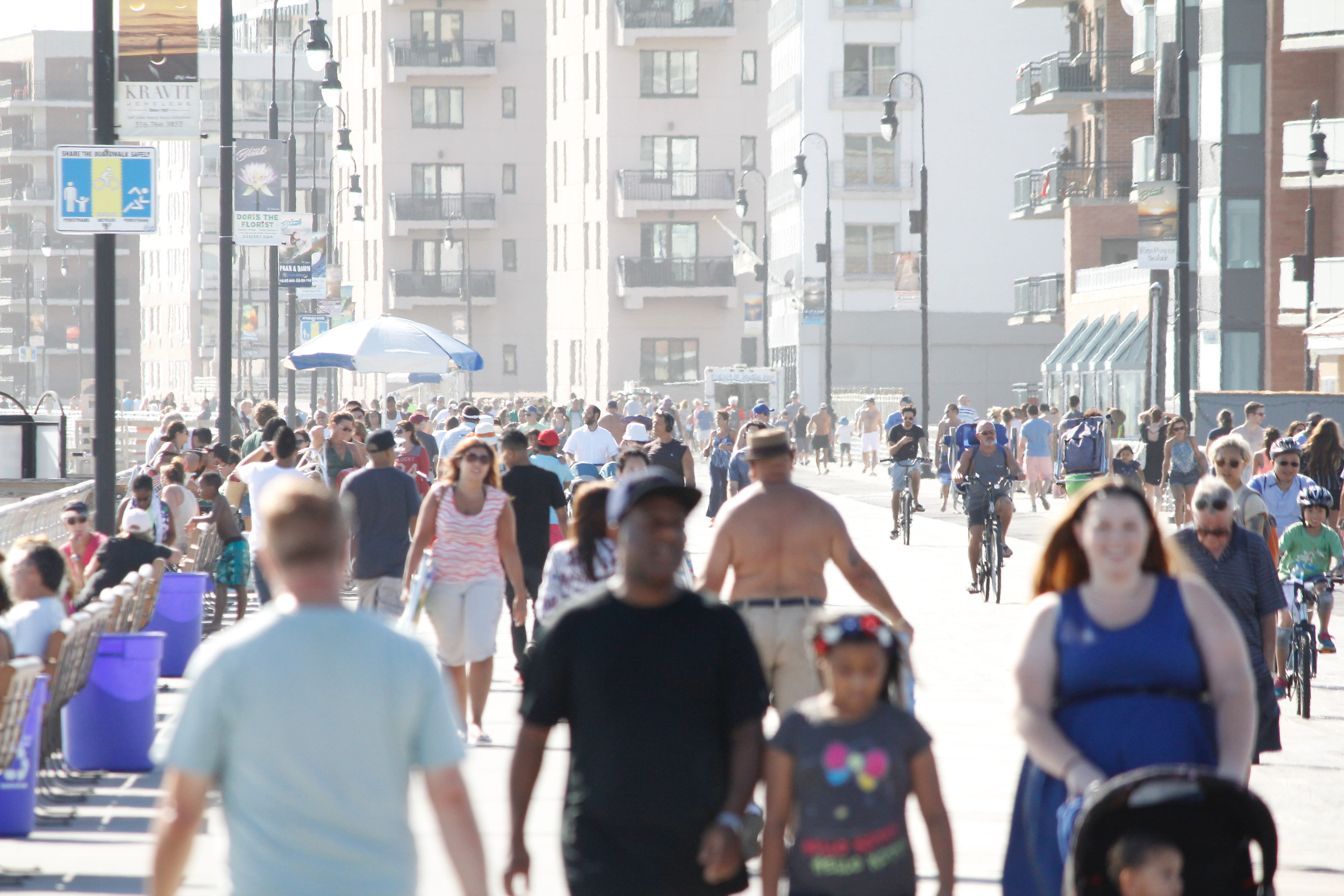Long Beach to install cameras on boardwalk
Police say surveillance video will deter crime
The City Council approved the summer installation of security cameras on the boardwalk on May 16, part of a citywide public safety measure that includes the use of license plate readers.
The $60,000 project, included in the 2017-18 capital improvement plan, is the second phase of an initiative that included the installation of security cameras in City Hall to improve safety.
“This is really not a Big Brother thing,” Police Commissioner Mike Tangney said. “It’s the latest technology, and it’s the way of the future.”
The next phase of the initiative, Tangney said, is the installation of 17 security cameras on the boardwalk, from Long Beach to National boulevards, considered the busiest section of the 2.2-mile span. “They will capture every image of someone coming up onto the boardwalk from the ramps,” Tangney said. “And then there will be mid-blocks that will capture activity on the boardwalk.”
He described what he called a “dog and skateboard epidemic” on the boardwalk, both of which are prohibited. “We’re seeing these violations frequently,” Tangney said, adding that the department has received numerous complaints about skateboarders and people walking dogs. “The bigger issue is that with the cameras up there, they’re less likely to commit a crime, and it’s a deterrent.”
Tangney said that the video images would not lead to police officers writing tickets, but would help track patterns of activity in problem areas and could be used in court. “The courts always ask [whether] there is any video, and there are a number of civil suits from falls and bike accidents, and it’s a great tool,” he said. “… If something does happen, it’s a good record for us to go back to and examine, and hopefully solve crimes.”
“We’re really using it if someone is assaulted or robbed on the boardwalk,” Tangney added after the meeting.
He said he hoped to add cameras to the rest of the boardwalk in the near future, and that the department’s long-term goals include connecting the technology with a planned Office of Emergency Management at City Hall. Security cameras were installed at City Hall two years ago, with plans to add them at all city facilities and parks.
“The hope is to expand each year and into covering all the city facilities,” Tangney said. “It’s the society we live in.”
But some residents questioned the camera initiative, saying that it would do little to deter skateboarders and other violators. “While safety is always of the utmost importance,” said Sam Pinto, president of the Eastholme Civic Association, “a few are wondering why the city has spent tens of thousands of dollars to put security cameras on a small section of the boardwalk, while using a dog-walker and skateboarding epidemic as its validation.”
“It’s more like Big Brother,” added resident Jeb Bellsey. “The fact that they had to use dog walkers and skateboarders as their justification means that they have none. I’d rather see skateboarders in the bike lane than people walking in the bike lane.”
Councilman Scott Mandel disagreed, saying that most residents support the initiative. “Overall, the responses from residents have been positive,” he said. “I think residents appreciate and feel more comfortable having the cameras as an extra safeguard and deterrent.”
“It has absolutely nothing to do with dog walkers and skateboarders, other than if we were to see a pattern develop in the a.m. or p.m.,” Tangney said. “If there’s a problem of dog waste in an area, we can find out who is the offender and target that observation. A repeat offense would have to occur in order to enforce.”
He also said that officers are patrolling the boardwalk in small electric cars to address public safety issues.
As the Herald reported last week, the Police Department is also implementing a system of automated license plate readers for all traffic lanes entering the city. The $260,000 system can read 900 plates per minute in any weather, and automatically compares them with a “hot list” of wanted vehicles, Tangney said.
The cameras in the system scan the plates and send real-time alerts to police officers, according to Tangney. It can pick up on cars that are flagged as stolen, have suspended registrations, are involved in criminal activity, have active warrants, are linked to missing persons or have unpaid fines and summonses.

 47.0°,
Mostly Cloudy
47.0°,
Mostly Cloudy 




